2018-04-26 - Nº 156
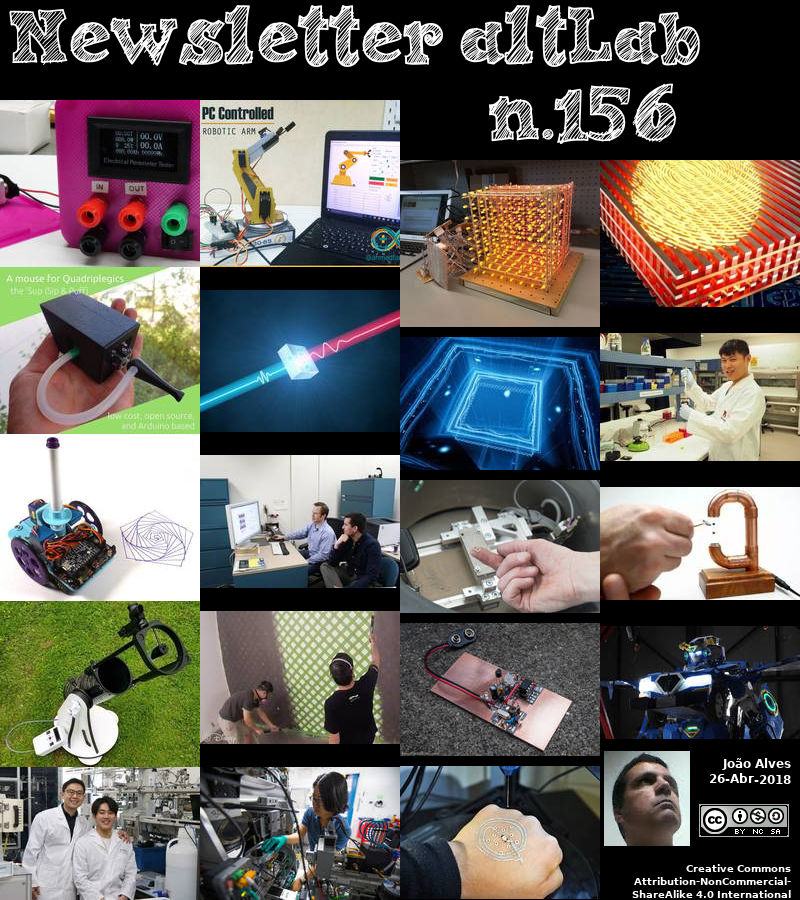
Editorial
Esta é a Newsletter Nº 156 que se apresenta com o mesmo formato que as anteriores. Se gostar da Newsletter partilhe-a!
Todas as Newsletters encontram-se indexadas no link.
Esta Newsletter tem os seguintes tópicos:
Faz hoje anos que nascia, em 1879, Owen Willans Richardson. Este físico inglês recebeu o Prémio Nobel de Física em 1928 pelo “seu trabalho sobre o fenómeno termiônico [emissões de electrões por metais quentes] e especialmente pela descoberta da lei que tem o seu nome”. Esse é o motivo pelo qual um filamento aquecido no tubo de vácuo liberta uma corrente de electrões em direcção ao ânodo, que era essencial para o desenvolvimento de aplicações como amplificadores de rádio ou o tubo de raios catódicos de TV. A lei de Richardson relaciona matematicamente como a emissão de electrões aumenta à medida que a temperatura absoluta da superfície do metal também aumenta. Ele também conduziu pesquisas sobre efeitos fotoeléctricos, o efeito giro-magnético, a emissão de electrões por reacções químicas, raios-X moles e o espectro do hidrogénio.
Faz também anos hoje que nascia, em 1900, Charles Richter. Este sismólogo americano ficou conhecido por ter criado a Escala Richter que mede a magnitude dos terremotos. Ele desenvolveu esta escala, conjuntamente com o seu colega Beno Gutenberg, no início dos anos 1930. A escala atribui classificações numéricas à energia libertada pelos terramotos. Richter usou um sismógrafo para registar o movimento real da Terra durante um terramoto. Trata-se de um instrumento que geralmente consiste num rolo de papel em constante desenrolamento, preso a um lugar fixo, e um pêndulo ou imã suspenso com um dispositivo de marcação acima do rolo. A escala leva em conta a distância do instrumento ao epicentro. Gutenberg sugeriu que a escala fosse logarítmica assim, por exemplo, um terremoto de magnitude 7 seria dez vezes mais forte do que um 6.
Por fim, faz anos hoje que nascia, em 1933, Arno Allan Penzias. Este astrofísico germano-americano dividiu metade do Prémio Nobel de Física de 1978 com Robert Woodrow Wilson pela descoberta de uma fraca radiação electromagnética em todo o universo. A sua detecção desta radiação deu forte suporte ao modelo de evolução cósmica do Big Bang.
Nesta semana que passou ficámos a conhecer o projecto da Asratec que está a desenvolver um "Transformer" totalmente funcional com 4 metros de altura. O J-deite RIDE é um robô que pode se transformar de uma forma humanóide bípede (modo robô) para uma forma accionada por rodas (modo veículo) e para trás. Tem a capacidade para duas pessoas e pode ser operada a partir do banco do condutor. Também pode ser operado por controle remoto via wifi. A BRAVE ROBOTICS projectou e desenvolveu o hardware, incluindo o exclusivo mecanismo de transformação, e o sistema de controle do robô da Asratec, o “V-Sido”, executa os movimentos do robô, como a transformação, a marcha bípede, a direcção e muito mais. O designer mecânico Kunio Okawara colaborou no design do robô.
Foi hoje lançada a nova versão do sistema Linux da Canonical - o Ubuntu. Com o nome de código Bionic Beaver esta versão é uma versão LTS (Long Time Support) e como principais novidades tem o Kernel Linux 4.15, o libreoffice foi actualizado para a versão 6.0, o calendário suporta previsões do tempo, algumas ferramentas foram empacotadas no formato snap, o GNOME Shell suporta o Thunderbolt 3, entre outras novidades. Esta newsletter foi escrita com o Geany em cima de um Ubuntu 18.04.
Na Newsletter desta semana apresentamos diversos projetos de maker. São apresentadas as revistas HackSpace magazine #6, a newelectronics de 24 de Abril e a MagPI 69 de Maio.
 João Alves ([email protected])
João Alves ([email protected])
O conteúdo da Newsletter encontra-se sob a licença  Creative Commons Attribution-NonCommercial-ShareAlike 4.0 International License.
Creative Commons Attribution-NonCommercial-ShareAlike 4.0 International License.
Novidades da Semana

4-meter Tall Ridable Transforming Humanoid Robot "J-deite RIDE" Unveiled
"J-deite Ride LLP, Asratec Corp. (“Asratec”, a robot software company of the SoftBank Group),Sansei Technologies, Inc. (“Sanesi”), and BRAVE ROBOTICS Inc. (“BRAVE ROBOTICS”) announced a prototype of the ridable transforming humanoid robot “J-deite RIDE”. J-deite RIDE is a 4-meter tall robot that can transform from a bipedal walking humanoid form (robot mode) to a wheel-driven form (vehicle mode) and back. Up to two people can ride the robot and is operable from the driver’s seat. It can also be operated by remote-control via wireless network. BRAVE ROBOTICS designed and developed the hardware, including the unique transforming mechanism, and Asratec’s robot control system “V-Sido” performs the robot motions such as the transformation, bipedal walking, wheel driving and more. Mechanical designer Kunio Okawara cooperated in the robot design." [...]

Ubuntu 18.04 LTS (Bionic Beaver) released
"The Ubuntu team is very pleased to announce our seventh long-term support release, Ubuntu 18.04 LTS for Desktop, Server, Cloud, and Core. Codenamed "Bionic Beaver", 18.04 LTS continues Ubuntu's proud tradition of integrating the latest and greatest open source technologies into a high-quality, easy-to-use Linux distribution. The team has been hard at work through this cycle, introducing new features and fixing bugs. The Ubuntu kernel has been updated to the 4.15 based Linux kernel, with additional support for Linux security module stacking, signing of POWER host and NV kernels, and improved support for IBM and Intel hardware enablement from Linux 4.16. TBC: Ubuntu Desktop 18.04 LTS brings a fresh look with the GNOME desktop environment. '''MORE HERE''' Ubuntu Server 18.04 LTS includes the Queens release of OpenStack including the clustering enabled LXD 3.0, new network configuration via netplan.io, and a next-generation fast server installer." [...]
Outras Notícias
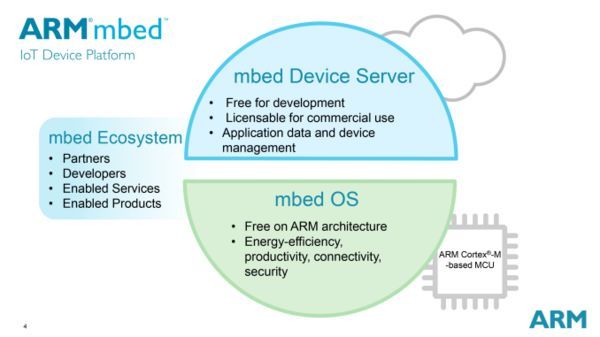
Mbed OS 5.8.3 released
"We are pleased to announce the Mbed OS 5.8.3 release is now available. This is the latest patch release based on the feature set that Mbed-OS-5.8 introduces. Summary This release adds new target support for MTB_ADV_WISE_1530, USI WM-BN-BM-22 and MAX32620C with the MAX32620FTHR platform. mbed-coap has been updated to version 4.4.2. This contains a fix for the issue where CoAP UDP retransmission does not work for blocks after the first one for requests (Eg. registration POST)." [...]

Allegro MicroSystems, LLC announces new back-biased differential linear Hall sensor IC
"Allegro MicroSystems, LLC introduces a new high precision, back-biased, programmable Hall-effect sensor IC. Allegro’s ATS344 includes differential Hall elements and is packaged in a custom back-biased package that includes an integrated magnet. This new device incorporates a 2wire current mode PWM output in order to help minimize pin count for remote sensors. It also includes on-chip EEPROM technology, capable of supporting up to 100 read/write cycles, for flexible end-of-line programming of calibration parameters. The ATS344 is ideal for automotive applications requiring high resolution detection of long stroke (>5mm) linear motion. The integrated back-bias magnet greatly simplifies packaging for the customer, requiring only a ferrous target to detect." [...]

STMicroelectronics and Jorjin Introduce Ultra-Low-Power Sigfox IoT Modules with Dual RF Connectivity
"STMicroelectronics (NYSE:STM), a global semiconductor leader serving customers across the spectrum of electronics applications, and Jorjin Technologies Inc., a Taipei, Taiwan based company established in 1997 to design and supply modules worldwide, today announced the certification of the dual-radio modules that combine Sigfox™ wireless-network technology with Bluetooth low energy (BLE). STMicroelectronics and Jorjin Introduce Ultra-Low-Power Sigfox IoT Modules with Dual RF Connectivity Jorjin’s WS211x Sigfox/BLE modules benefit from the market-leading performance and energy efficiency of ST’s BlueNRG-1 BLE System-on-Chip (SoC) and the S2-LP sub-1GHz RF transceiver. These advantages have enabled Jorjin’s modules to deliver cutting-edge connectivity and great battery lifetime, targeting coin-cell -operated or energy-harvesting IoT applications. Fully programmable devices, Jorjin’s new Sigfox modules exploit the ultra-low power Arm® Cortex®-M0 technology embedded in ST’s BLE SoC to act as independent IoT connectivity nodes. The combination of BLE with Sigfox’ low-power wide-area network (LPWAN) provides key benefits to IoT systems, such as firmware update over-the-air, which is not possible with conventional ‘Sigfox-only’ modules. Other benefits of having an IoT device connected both remotely through the Sigfox network and locally through BLE include the possibility to modify device settings during installation or maintenance, or to trace assets, which often change their position inside an area covered with BLE beacon stations." [...]
Ciência e Tecnologia

New record on squeezing light to one atom
"A study published in Science reports on how ICFO researchers, with MIT and Univ. of Minho, are able to confine and guide light down to a space of 1-atom thick in dimension. All electronic devices in our daily lives - computers, smartphones etc. – consist of billions of transistors, the key building block invented in Bell Labs in the late 1940s. The transistor started out being as big as 1cm, but thanks to advancement of technology, it has reached an amazing size of 14 nanometers, that is, 1000 times smaller than the diameter of a hair. At the same time, there has also been a race to further shrink devices that control and guide light." [...]

3D Nanoprinting Facilitates Communication with Light
"At Karlsruhe Institute of Technology (KIT), researchers have developed a flexible and efficient concept to combine optical components in compact systems. They use a high-resolution 3D printing process to produce tiny beam-shaping elements directly on optical microchips or fibers and, hence, enable low-loss coupling. This approach replaces complicated positioning processes that represent a high obstacle to many applications today. The scientists present their concept in the Nature Photonics journal (DOI: 10.1038/s41566-018-0133-4). In view of constantly growing data traffic, communication with light is gaining importance. For many years now, computing centers and worldwide telecommunication networks have been using optical connections for the quick and energy-efficient transmission of large amounts of data." [...]

A powerful new source of high-energy protons
"Nearly 20 years ago, researchers conducting experiments on Lawrence Livermore National Laboratory's (LLNL) Nova Petawatt laser system -- the world’s first quadrillion-watt laser -- discovered that when the system’s intense short-pulse laser beams struck a thin foil target, an unexpected torrent of high-energy electrons and protons streamed off the back of the target. Earlier this month, an international team of researchers used the Nova Petawatt’s successor, the National Ignition Facility's (NIF) petawatt-class Advanced Radiographic Capability (ARC), to begin developing an experimental platform that promises to turn Nova’s surprise discovery into a powerful new source of protons to study the extreme conditions deep inside the planets and the stars, enhance targeted tumor therapy and advance the frontiers of high energy density (HED) science. In two NIF Discovery Science experiments, the researchers fired four ARC beamlets at a 33-micron-thick titanium foil, setting up a strong electrostatic sheath field called a Target Normal Sheath Accelerating (TNSA) field perpendicular to the target (normal is a geometric term for perpendicular). As the field blew away from the back of the target, it accelerated high-energy protons and ions from the contamination layer of proton-rich hydrocarbons and water coating the target’s surface, all moving rapidly in the same direction. “The results were as good as we had hoped for,” said LLNL physicist Tammy Ma, the campaign’s principal investigator. “It was definitely a win." [...]
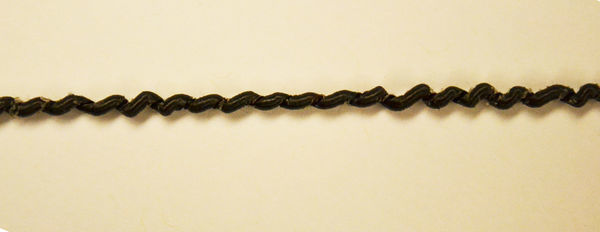
Strong carbon fiber artificial muscles can lift 12,600 times their own weight
"The pull-up, an exercise dreaded by most, answers a basic question: are your muscles strong enough to lift your own body weight? Some Illinois researchers working on artificial muscles are seeing results even the fittest individuals would envy, designing muscles capable of lifting up to 12,600 times their own weight. MechSE assistant professor Sameh Tawfick, Beckman postdoctoral fellow Caterina Lamuta, and Simon Messelot recently published a study on how to design super strong artificial muscles in the journal Smart Material and Structures. The new muscles are made from carbon fiber-reinforced siloxane rubber and have a coiled geometry. These muscles are capable of not only lifting up to 12,600 times their own weight, but also supporting up to 60 MPa of mechanical stress, providing tensile strokes higher than 25% and specific work of up to 758 J/kg. This amount is 18 times more than the specific work natural muscles are capable of producing." [...]

Pulses of light with a tilt and a twist
"An exact mathematical solution reveals how to tilt a laser pulse and move intensity peaks at faster than the speed of light, or even backwards A breakthrough in the mathematical solution for manipulating pulses of light clarifies the physics of ‘tilted’ laser pulses, and shows how they can be used to produce exotic effects1. The solution, developed by researchers from A*STAR and the Massachusetts Institute of Technology (MIT), could advance applications such as terahertz lasers, X-ray generation and ultrafast electron imaging. Pulsed lasers are commonly used in industrial and research applications to deliver precision doses of high-intensity laser energy, which for example can prevent the target from being damaged while still heating or exciting it to a certain energy state. Some of the latest techniques use ultrashort pulses which last just a few femtoseconds — one quadrillionth of a second — to excite atoms and molecules and observe how they respond. One of the methods used to enhance the interaction between a laser pulse and the target atom or molecule is to tilt the wavefront of the pulse so that the energy delivery becomes slightly spread over time and in space, like the angle on the blade of a snow-plow. This effect can also be used to match pulses from different sources, which at such ultrashort pulse-lengths can be extremely challenging." [...]
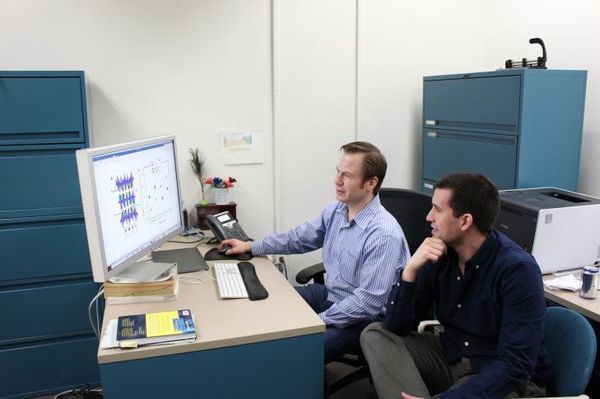
Strained materials make cooler superconductors
"University of Wisconsin-Madison engineers have added a new dimension to our understanding of why straining a particular group of materials, called Ruddlesden-Popper oxides, tampers with their superconducting properties. The findings, published in the journal Nature Communications, could help pave the way toward new advanced electronics. “Strain is one of the knobs we can turn to create materials with desirable properties, so it is important to learn to manipulate its effects,” says Dane Morgan, the Harvey D. Spangler Professor of materials science and engineering at UW-Madison and a senior author on the paper. “These findings might also help explain some puzzling results in strained materials.” Superconducting materials could make the nation’s power grid much more efficient, thanks to their ability to conduct electricity with zero resistance. The substances also enable MRI machines to see inside patients’ bodies and levitate bullet trains above the tracks because of the Meissner effect. “This work is a good example of how basic research can influence developing transformative technologies through systematic understanding of material behaviors by close interaction between theory and experiment,” says Ho Nyung Lee, a distinguished scientist at the Department of Energy’s Oak Ridge National Laboratory who led the research." [...]

Applying Computer-Human Collaboration to Accelerate Detection of Zero-Day Vulnerabilities
"Today, Commercial off-the-shelf (COTS), Government off-the-shelf (GOTS), and Free and open-source (FOSS) software support nearly all aspects of DoD, military, and commercial operations. Securing this diverse technology base requires highly skilled hackers who reason about the functionality of software and identify novel vulnerabilities, using a suite of tools and techniques that require extensive training. While effective, the process is largely manual and requires hundreds, if not thousands, of hours of effort for each vulnerability discovered. The use of automated program analysis to support the discovery process has become more prevalent in recent years. However, current automation is limited and only able to reason over a few vulnerability classes without human involvement due to a lack of understanding of certain software semantics and context clues. To address the challenges facing our abilities to scale and accelerate vulnerability detection, DARPA’s Information Innovation Office (I2O) today announced the Computers and Humans Exploring Software Security (CHESS) program." [...]

Yale plays quantum catch in new research
"Yale’s latest work expanding the reach of quantum information science is actually a game of quantum pitch and catch. In a new study published April 23 in the journal Nature Physics, Yale researchers “pitch” a qubit — a tiny bit of quantum data — from one physical point in a microwave cavity to a separate point in a different cavity. It is the first time an end-to-end quantum transmission has been done on demand and represents the first of two Yale experiments involving “pitch-and-catch” technologies that will be published this year. Quantum computing offers the possibility of computation speeds that are orders of magnitude faster than today’s supercomputers. Yale researchers are at the forefront of efforts to develop the first fully useful quantum computers, and have done pioneering work in quantum computing with superconducting circuits. But in order for a quantum computer to run more complex algorithms, it will need more processing power, just as a classical computer does." [...]
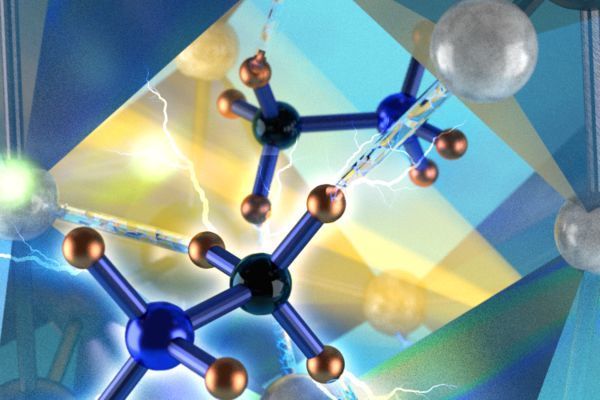
Neutrons provide insights into increased performance for hybrid perovskite solar cells
"Neutron scattering has revealed, in real time, the fundamental mechanisms behind the conversion of sunlight into energy in hybrid perovskite materials. A better understanding of this behavior will enable manufacturers to design solar cells with increased efficiency. The multi-institutional team of researchers from the Department of Energy’s Oak Ridge National Laboratory, Hunan University and the University of Nebraska–Lincoln used photoluminescence measurements, along with neutron and x-ray scattering, to study the relationship between the material’s microscopic structure and its optoelectronic properties. By examining the material under varying degrees of temperature, the researchers were able to track atomic structural changes and establish how hydrogen bonding plays a key role in the material’s performance. Their results are published in the journal Advanced Materials. Hybrid perovskites hold promise to be more efficient in converting light into energy than traditional solar cell materials." [...]
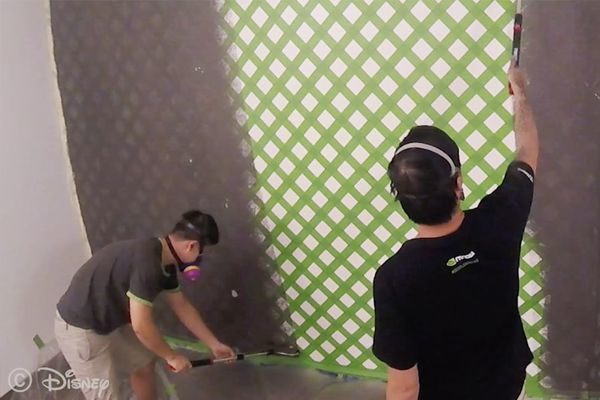
Conductive Paint Transforms Walls Into Sensors, Interactive Surfaces
"Walls are what they are — big, dull dividers. With a few applications of conductive paint and some electronics, however, walls can become smart infrastructure that can sense human touch, detect gestures and detect when appliances are used. Researchers at Carnegie Mellon University and Disney Research found they could transform dull walls into smart walls at relatively low cost — about $20 per square meter — using simple tools and techniques, such as a paint roller. These new capabilities might enable users to place or move light switches or other controls anywhere on a wall that is most convenient, or to control video games by using gestures. By monitoring activity in the room, this system could adjust light levels when a TV is turned on or alert a user in another location when a laundry machine or electric kettle turns off. "Walls are usually the largest surface area in a room, yet we don't make much use of them other than to separate spaces, and perhaps hold up pictures and shelves," said Chris Harrison, assistant professor in CMU's Human-Computer Interaction Institute (HCII) and CMU alumnus." [...]
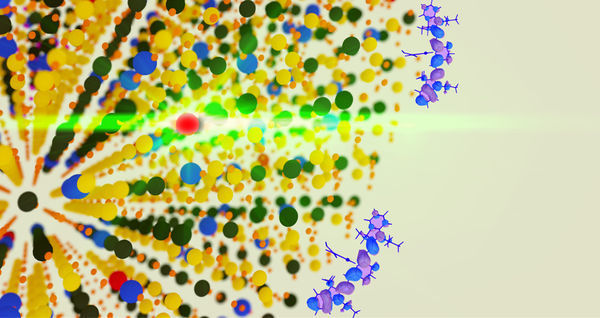
Nanoparticle Breakthrough Could Capture Unseen Light for Solar Energy Conversion
"An international team of scientists has demonstrated a breakthrough in the design and function of nanoparticles that could make solar panels more efficient by converting light usually missed by solar cells into usable energy. The team, led by scientists at the U.S. Department of Energy’s Lawrence Berkeley National Laboratory (Berkeley Lab), demonstrated how coating tiny particles with organic dyes greatly enhances their ability to capture near-infrared light and to reemit the light in the visible light spectrum, which could also be useful for biological imaging. Once they understood the mechanism that enables the dyes on nanoparticles to function as antennas to gather a broad range of light, they successfully reengineered the nanoparticles to further amplify the particles’ light-converting properties. Their study was published online April 23 in Nature Photonics. “These organic dyes capture broad swaths of near-infrared light,” said Bruce Cohen, a scientist at Berkeley Lab’s Molecular Foundry who helped to lead the study along with Molecular Foundry scientists P. James Schuck (now at Columbia University), and Emory Chan. The Molecular Foundry is a nanoscience research center." [...]
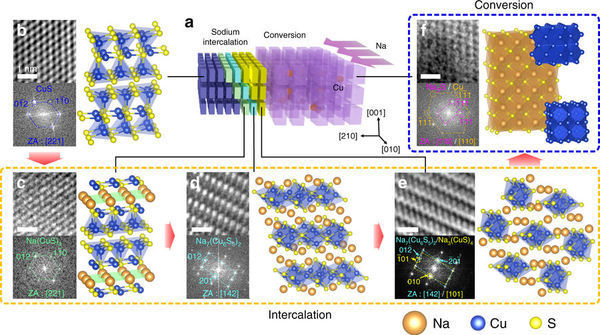
KAIST Develops Sodium Ion Batteries using Copper Sulfide
"A KAIST research team recently developed sodium ion batteries using copper sulfide anode. This finding will contribute to advancing the commercialization of sodium ion batteries (SIBs) and reducing the production cost of any electronic products with batteries. Professor Jong Min Yuk and Emeritus Professor Jeong Yong Lee from Department of Materials Science and Engineering succeeded in developing a new anode material suitable for use in a SIB. Compared to the existing anode materials, the copper sulfide anode was measured to exhibit 1.5 times better cyclability with projected 40% reduction in cost. Batteries used in various applications including mobile phones are lithium ion batteries, mostly referred as Li-ion batteries or LIBs. Though they are popularly used until now, large-scale energy storage systems require much inexpensive and abundant materials." [...]
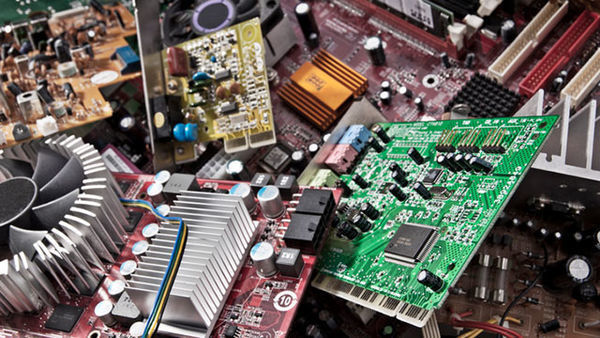
Chemical sleuthing leads to detection of little-known flame retardant in the environment
"Chemists at Indiana University have published research findings on their discovery of a new and relatively unknown flame retardant in the environment. Their study is the first to detect the potentially toxic chemical in North America. The chemical, called TTBP-TAX, is part of a new class of triazine-based "alternative" compounds that have been introduced as substitutes for earlier generations of flame retardants that were banned or removed from the market because of health and environmental concerns. The researchers found the chemical not only in an electronic waste facility, where it would be expected, but in the bedrooms and living rooms of homes in Bloomington, Indiana. "We don't know much about these compounds," said Marta Venier, a scientist in the School of Public and Environmental Affairs at Indiana University Bloomington and the study's lead author. "This research shows they are in the environment and we come into contact with them, but we don't know much about their effects."" [...]
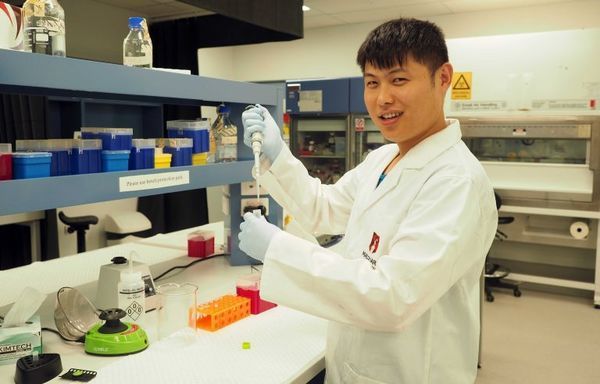
Advanced sensor to unlock the secrets of the brain
"CNBP researchers have announced the development of a state-of-the-art sensor that can for the first time detect signalling molecules, called cytokines, which operate in the living brain. Cytokines in the brain are secreted by glia cells that make up nearly 90% of all brain cells. Cytokines play a central role in controlling mood and cognition and may also contribute to a number of mental health disorders. “What we’ve developed is the first sensor capable of monitoring the release of these cytokines in the brain,” says lead researcher Kaixin Zhang, a PhD candidate at the ARC Centre of Excellence for Nanoscale BioPhotonics (CNBP) at Macquarie University. “Critically, there is mounting evidence that these glial-released cytokines play a central role in regulating a range of brain functions. In particular they are responsible for affecting mood, cognition and behaviour.” “Our innovative new sensor has the potential to increase our knowledge not only of how the brain works, but may be able to shed light on conditions such as depression, stress, anxiety and even schizophrenia,” he says." [...]

Spectator Qubits Seek to Improve Control of Four Quantum Computing Systems
"International project led by Duke University engineers receives $6 million from Army Research Office An international team of researchers led by Duke University has received more than $9 million to investigate the potential advantages of using a “spectator qubit” to improve several approaches to quantum computing systems. The initial three-year award comes from the Army Research Office’s Multidisciplinary University Research Initiative (MURI) and its Australian counterpart (AUSMURI). The program supports teams whose research efforts intersect more than one traditional science and engineering discipline in an effort to accelerate research and hasten the transition of basic research findings to practical applications. The AUSMURI program is designed to encourage Australian universities to collaborate on US MURI projects. There are many researchers worldwide working to engineer a modular, scalable quantum computer. Whereas traditional computers process information in the form of binary bits that can be either a 1 or a 0, quantum physics allows for quantum bits called qubits to take on multiple configurations simultaneously." [...]

Quantum shift shows itself in coupled light and matter
"A team led by Rice University scientists used a unique combination of techniques to observe, for the first time, a condensed matter phenomenon about which others have only speculated. The research could aid in the development of quantum computers. The researchers, led by Rice physicist Junichiro Kono and graduate student Xinwei Li, observed and measured what’s known as a Bloch-Siegert shift in strongly coupled light and matter. Results of the complicated combination of modeling and experimentation are the subject of a paper in Nature Photonics. The technique could lead to a greater understanding of theoretical predictions in quantum phase transitions because the experimental parameters used in the Rice experiments are highly adjustable, according to Kono. Ultimately, he said, it may help in the development of robust quantum bits for advanced computing." [...]
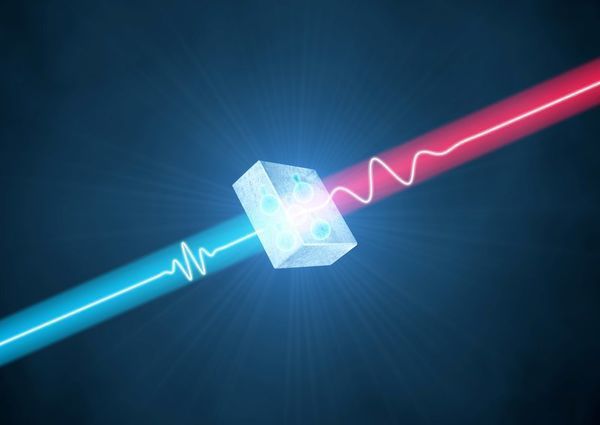
Molecules Brilliantly Illuminated
"Physicists at the Laboratory for Attosecond Physics, which is jointly run by Ludwig-Maximilians-Universität and the Max Planck Institute of Quantum Optics, have developed a high-power laser system that generates ultrashort pulses of light covering a large share of the mid-infrared spectrum. The researchers envisage a wide range of applications for the technology – in the early diagnosis of cancer, for instance. Molecules are the building blocks of life. Like all other organisms, we are made of them. They control our biorhythm, and they can also reflect our state of health. Researchers at the Laboratory for Attosecond Physics (LAP) – a joint venture between Ludwig-Maximilians-Universität (LMU) and the Max Planck Institute of Quantum Optics (MPQ) in Garching near Munich – want to use brilliant infrared light to study molecular disease markers in much greater detail, for example to facilitate early stage cancer diagnosis." [...]
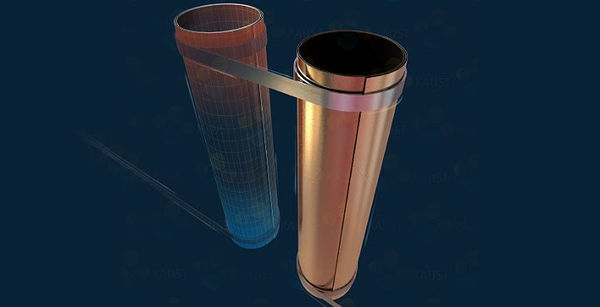
Energy efficiency on a roll
"Ultrathin films curve up into long, light and cost-effective heat-harvesting tubes for high-power generation. A system that can recycle excess heat into electricity could help meet the increasing energy demands of a growing global population. KAUST researchers have now engineered a lightweight tubular system that can effectively harvest this abundant, clean source of energy that often goes to waste. “This will help us address the energy crisis and environmental pollution,” says team leader Muhammad Hussain. Heat is released into the environment by various sources, ranging from industrial machinery to everyday life objects that warm up during operation, such as electronic devices, household appliances and automotive exhaust pipes. Many scientists have attempted to harness this energy source by searching for materials that can create electricity through transforming thermal gradients or temperature differences between hot and cold zones of a system." [...]

New research could literally squeeze more power out of solar cells
"Physicists at the University of Warwick have published new research in the Journal Science (today 19th April 2018 - via the journal’s First Release pages) that could literally squeeze more power out of solar cells by physically deforming each of the crystals in the semiconductors used by photovoltaic cells. The paper entitled the “Flexo-Photovoltaic Effect” was written by Professor Marin Alexe, Ming-Min Yang, and Dong Jik Kim who are all based in the University of Warwick’s Department of Physics. The Warwick researchers looked at the physical constraints on the current design of most commercial solar cells which place an absolute limit on their efficiency. Most commercial solar cells are formed of two layers creating at their boundary a junction between two kinds of semiconductors, p-type with positive charge carriers (holes which can be filled by electrons) and n-type with negative charge carriers (electrons). When light is absorbed, the junction of the two semiconductors sustains an internal field splitting the photo-excited carriers in opposite directions, generating a current and voltage across the junction. Without such junctions the energy cannot be harvested and the photo-exited carriers will simply quickly recombine eliminating any electrical charge." [...]
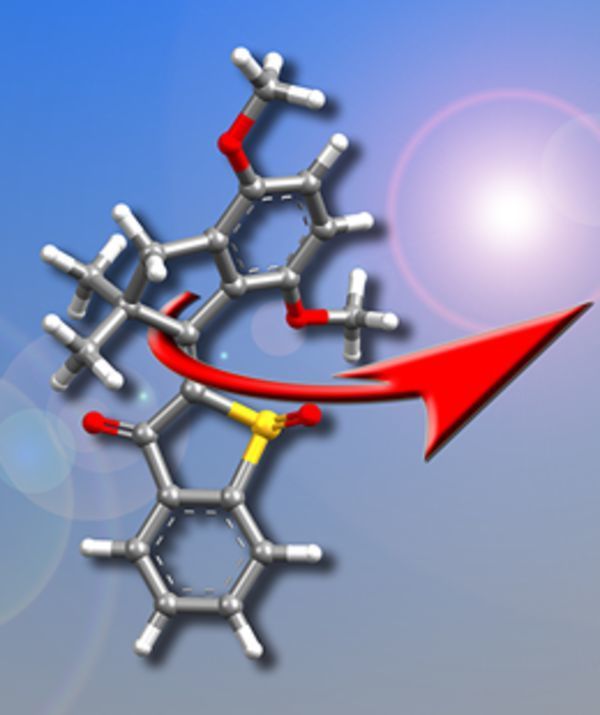
Four states of rotation
"With the help of ultrafast spectroscopy and quantum mechanical calculations, LMU researchers have characterized the complete rotational cycle of the light-driven, chemical motor molecule hemithioindigo. Chemist Dr. Henry Dube, heading an Emmy Noether Junior Research Group, has developed a molecular machine based on the molecule hemithioindigo (HTI). It exhibits unidirectional rotational motion about a specific chemical bond when exposed to light. In collaboration with his colleagues in the DFG-funded Collaborative Research Center (SFB) 749 – Prof. Eberhard Riedle (Chair of Experimental Physics – BioMolekulare Optik) and Regina de Vivie-Riedle (Professor of Theoretical Physics) – he has now resolved the dynamics of the entire rotational mechanism. The findings appear in the Journal of the American Chemical Society (JACS). Hemithioindigo contains a central carbon-carbon double bond (C=C)." [...]

Surface engineering gets the red light
"Perovskite particles could improve the performance of solar cells and light-emitting diodes via a simple process to stabilize the nanocrystal surface. A method for chemically stabilizing optical nanocrystals, without degrading their electrical properties, has been developed by scientists at KAUST. Halide perovskites are in an exciting class of materials for optoelectronics and photovoltaics. These materials efficiently absorb visible light, possess long charge-carrier diffusion lengths and are easy and cheap to produce. The performance of optical devices can also be improved by incorporating nanometer-scale particles, which have far superior light-emitting and -absorbing properties than the bulk material from which they are derived. So it is unsurprising that scientists are keen to combine these two approaches." [...]
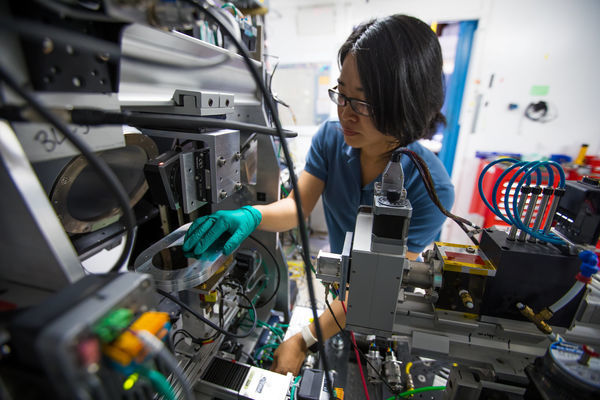
Artificial Intelligence Accelerates Discovery of Metallic Glass
"Machine learning algorithms pinpoint new materials 200 times faster than previously possible If you combine two or three metals together, you will get an alloy that usually looks and acts like a metal, with its atoms arranged in rigid geometric patterns. But once in a while, under just the right conditions, you get something entirely new: a futuristic alloy called metallic glass. The amorphous material’s atoms are arranged every which way, much like the atoms of the glass in a window. Its glassy nature makes it stronger and lighter than today’s best steel, and it stands up better to corrosion and wear. Although metallic glass shows a lot of promise as a protective coating and alternative to steel, only a few thousand of the millions of possible combinations of ingredients have been evaluated over the past 50 years, and only a handful developed to the point that they may become useful. Now a group led by scientists at Northwestern University, the Department of Energy’s SLAC National Accelerator Laboratory and the National Institute of Standards and Technology (NIST) has reported a shortcut for discovering and improving metallic glass — and, by extension, other elusive materials — at a fraction of the time and cost." [...]
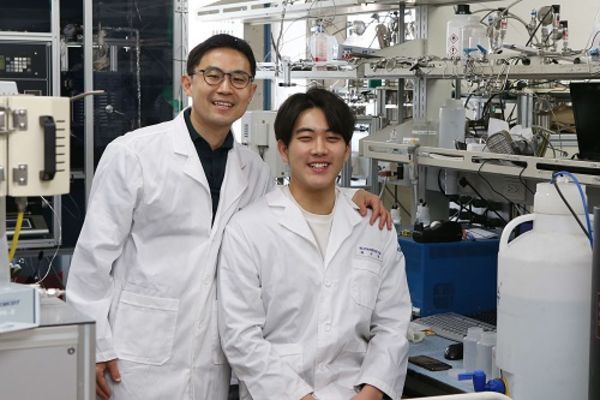
KAIST Succeeds in Producing 50x More Stable Adsorbent
"A KAIST research team developed a technology to increase the stability of amine-containing adsorbents by fifty times, moving one step further toward commercializing stable adsorbents that last longer. Professor Minkee Choi from the Department of Chemical and Biomolecular Engineering and his team succeeded in developing amine-containing adsorbents that show high oxidative stability. The capture of the greenhouse gas carbon dioxide is an active ongoing research field, and some of the latest advancements point to amine-containing adsorbents as an efficient and environment-friendly way to capture carbon dioxide. However, existing amine-containing adsorbents are known to be unstable under oxidation, which chemically breaks down the adsorbent, thereby making it difficult to rely on amine-containing adsorbents for repeated and continued use. The researchers have discovered that the miniscule amount of iron and copper present in the amine accelerate the oxidative breakdown of the amine-containing adsorbent. Upon this discovery, they proposed the use of a chelator substance, which essentially suppresses the activation of the impurities." [...]
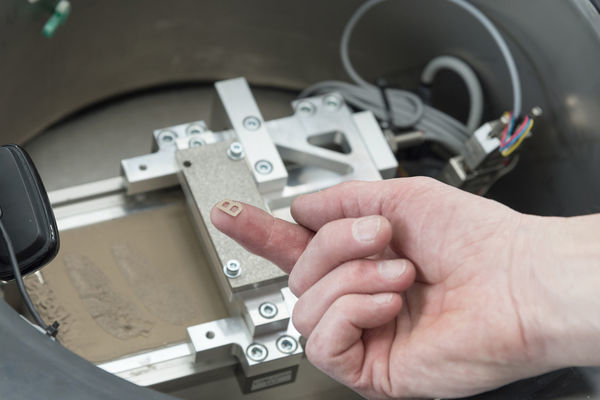
Research group tests innovative 3D printing process for space flight
"BAM wants to manufacture tools for the first time under zero gravity conditions using 3D printing. Together with the Clausthal University of Technology (CUT) and the DLR Institute of Composite Structures and Adaptive Systems in Braunschweig, BAM is testing its innovative additive manufacturing process during the 31st parabolic flight campaign of the German Aerospace Center (DLR) from 6th to 8th March. The goal of the experiments is to show that astronauts can manufacture tools or spare parts when needed, even on a space mission. "Additive manufacturing methods are the future of sustainable production," said BAM president Prof. Ulrich Panne. "Especially in the aerospace industry, where every kilo counts, enormous costs can be saved if only a printer and powder instead of a complete tool box and components have to be taken on board." In the current experiment, metallic powders are used for the first time under zero gravity conditions." [...]
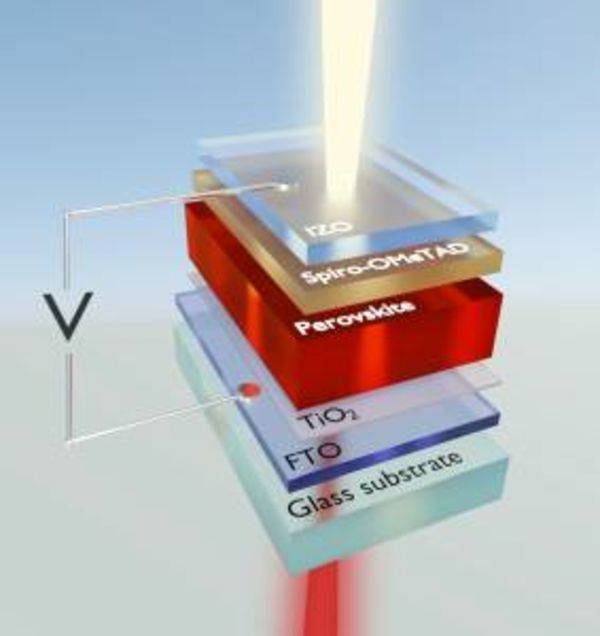
Why Perovskite Solar Cells Are So Efficient
"Solar cells with efficiencies above 20% and produced at low costs – perovskites make this possible. Now, researchers of Karlsruhe Institute of Technology (KIT) have gained fundamental insight into the function of perovskite solar cells. They found that bound states of electron-hole pairs can form during the absorption of light. Still, these pairs can be separated easily for current to flow. In addition, they enhance absorption. Work of the scientists is reported in the journal Applied Physics Letters." [...]
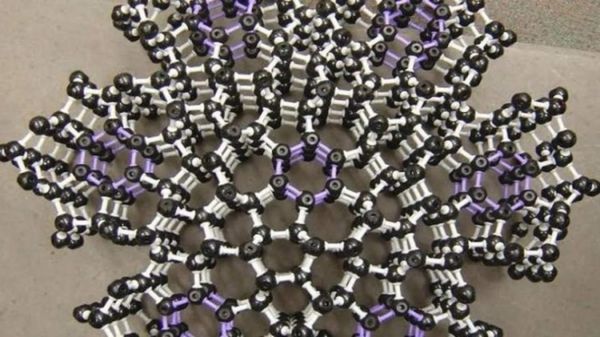
Novamene, A Potential Breakthrough Material, To Be Synthesized With Khalifa University
"Newly Conceived Carbon Material Could Become Foundation for Faster, More Efficient Electronics and Quantum Computers The transformative potential of a new carbon material conceived three years ago by two Emirati brothers and an American nuclear scientist may soon be realized with the help of Khalifa University of Science and Technology. In 2014, Mohammed Al Fahim, Rashed Al Fahim and Dr. Larry Burchfield conceived of and designed a new class of carbon allotropes they have named novamene. Novamene combines the molecular structure of two pure forms of carbon – diamond and graphite – producing an allotrope that could possess thermal, electrical and optical properties from its molecular structure that makes it a promising candidate for a range of high-energy electronic applications, including as transistors for faster and smaller computers and as qubits for quantum computing. So far, the work on novamene has been conceptual. In a paper authored by Dr. Burchfield, Mohammed and two others, published earlier this year in the journal Heylion, the unique properties of novamene are identified and described after the team ran a series of advanced computer simulations. But now a team of researchers from Khalifa University of Science and Technology and the University of Milan are working to synthesize the special material in the lab." [...]
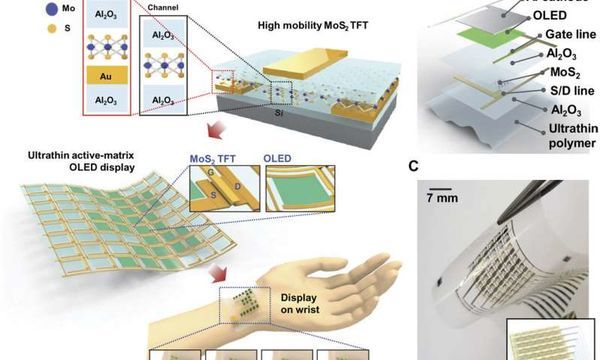
MoS2 transistor that can be used with bendable OLED displays
"A team of researchers from Yonsei University, and Chung-Ang University, both in Korea, has developed a MoS2 transistor that can be used with bendable OLED displays. In their paper published on the open access site Science Advances, the group explains overcoming the problem of resistance between the MoS2 and a transistor's source and drain to create an operational bendable 6x6 pixel array. As phone makers seek ways to separate themselves from their competitors, research continues into the idea of a truly bendable product, which would include a bendable screen. There have been advances, but to date, there is still not a commercially available phone that can be bent like a piece of paper and shoved in a back pocket. In this new effort, the researchers report that they have overcome one of the hurdles involved in bringing a truly bendable phone, television or other screen device to market. One of the serious roadblocks to bendable devices is the resistance that occurs between MoS2 and a transistor's source and drain electrodes—it is just too high for practical use." [...]
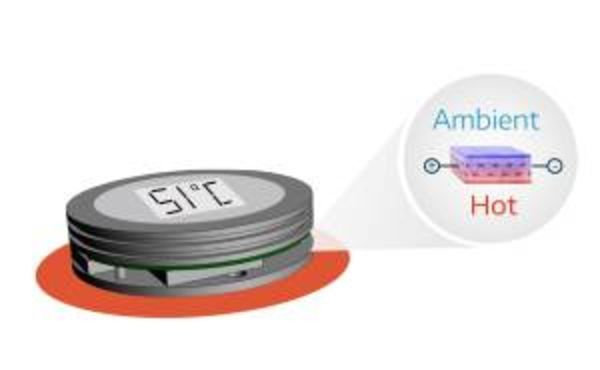
Microenergy Supply without Battery and Cable
"KIT’s Startup otego GmbH Has Developed “oTEG,“ the First Commercial Printed Thermoelectric Generator Worldwide Power plants not larger than a sugar cube that can be used for both domestic and industry purposes: Thermoelectric generators (TEG) convert even small ambient temperature differences into electrical energy. otego GmbH, a spinoff of Karlsruhe Institute of Technology (KIT), has now commercialized the first electronic component of its kind: “oTEG” will be presented by the developers at the Hannover Messe from April 23 to 27, 2018. The team of otego makes thermoelectdric generators (TEG) fit for the mass market by using novel materials and large-scale production processes. Production of a prototype series is about to start this year. The “oTEG” innovative energy converter is suited for a large range of applications in the areas of Industry 4.0 and Smart Homes. Similar to solar cells that convert light into electrical energy, TEGs can extract electrical power from the ambient heat and, in this way, ensure continuous supply." [...]

Pulp Nonfiction: Low-Cost Touch Tracking for Paper
"Paper continues to be a versatile and indispensable material in the 21st century. Of course, paper is a passive medium with no inherent interactivity, precluding us from computationally-enhancing a wide variety of paper-based activities. In this work, we present a new technical approach for bringing the digital and paper worlds closer together, by enabling paper to track finger input and also drawn input with writing implements. Importantly, for paper to still be considered paper, our method had to be very low cost. This necessitated research into materials, fabrication methods and sensing techniques. We describe the outcome of our investigations and show that our method can be sufficiently low-cost and accurate to enable new interactive opportunities with this pervasive and venerable material." [...]
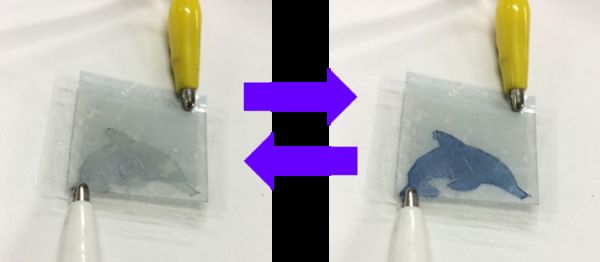
Electronic paper made of "real" paper
"Osaka University-led researchers developed technology to combine “a transparent paper” with high transparency (90% of visible-light transmittance of paper made from cellulose nanofibers) and a conventional “white paper” made from cellulose pulp fibers, fabricating a highly transparent electrode and a white electrolyte with high visibility. Through the combination of the electrode and electrolyte, they produced paper-based electrochromic (EC) displays. Their research results were published in ACS Applied Materials & Interfaces. In EC devices, when voltage is applied to a transparent EC electrode, ions or electrons move into the EC layer in the electrolyte (ionic liquid), resulting in coloration or decolzoration. However, conventional EC devices had problems: sealing was necessary for preventing leakage of the electrolyte, making thin films was difficult, and EC performance was compromised due to evaporation of the electrolyte. A group of researchers led by Hirotaka Koga succeeded in preparing a paper electrolyte by supporting a non-volatile electrolyte (1-butyl-3-methylimidazolium tetrafluoroborate [bmim]BF4) on the surface of cellulose pulp fibers through hydrogen bonding." [...]
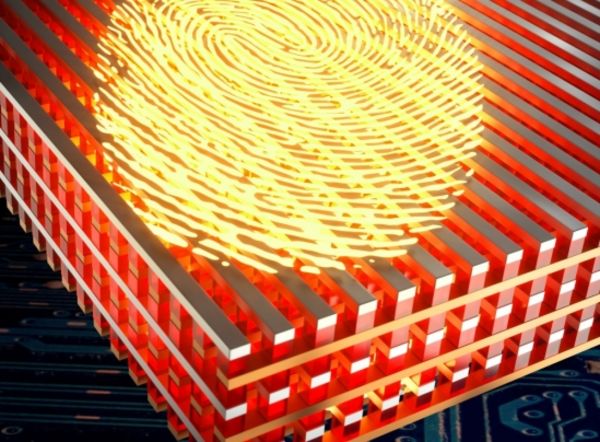
An Ionic Black Box
"UCSB researchers use emerging memory devices to develop electronic circuits for cybersecurity applications While we embrace the way the Internet of Things already is making our lives more streamlined and convenient, the cybersecurity risk posed by millions of wirelessly connected gadgets, devices and appliances remains a huge concern. Even single, targeted attacks can result in major damage; when cybercriminals control and manipulate several nodes in a network, the potential for destruction increases. UC Santa Barbara electrical and computer engineering professor Dmitri Strukov is working to address the latter. He and his team are looking to put an extra layer of security on the growing number of internet- and Bluetooth-enabled devices with technology that aims to prevent cloning, the practice by which nodes in a network are replicated and then used to launch attacks from within the network. A chip that deploys ionic memristor technology, it is an analog memory hardware solution to a digital problem. “You can think of it as a black box,” said Strukov, whose new paper, “Hardware-intrinsic security primitives enabled by analogue state and nonlinear conductance variations in integrated memristors,” appears on the cover of Nature Electronics." [...]

Researchers Create Precision Optical Components with Inkjet Printing
"Researchers have developed an inkjet printing technique that can be used to print optical components such as waveguides. Because the printing approach can also fabricate electronics and microfluidics, it could advance a variety of devices such as optical sensors used for health monitoring and lab-on-a-chip devices that integrate and automate multiple laboratory functions onto a small circuit, or chip. “Inkjet printing is a very attractive method for fabricating optical components because the positions and sizes of features can easily be modified and there is virtually no material waste,” said FabianLütolf, a member of the research team led by Rolando Ferrini at CSEM in Switzerland. “However, the surface tension of the inks makes it difficult to print lines with a specific height, which is necessary to create a waveguide.” Inkjet printing is an additive manufacturing technique that uses tiny nozzles like the ones found in desktop inkjet printers to deposit a computer-generated pattern of drops (the “ink”) onto a substrate to build a structure. The researchers discovered that depositing the ink in two steps, rather than the traditional single step, enabled printing of lines with a specific height and with much smoother features than would otherwise be possible. The printed structures are considered to have 2.5 dimensions because although they are not flat, their complexity is limited compared to structures created with traditional 3D printing." [...]

Quantum Dots Enable Faster, Easier Photon Detection, More Secure Data
"A team of researchers including U of A engineering and physics faculty has developed a new method of detecting single photons, or light particles, using quantum dots. Single photon detection is a key element to enable use of quantum information, a method of transferring information that is much faster and more secure than current methods. This technology has other applications as well, including biological and medical imaging, spectroscopy, and astronomical observation. Shui-Qing “Fisher” Yu, associate professor of electrical engineering; Greg Salamo, distinguished professor of physics; and Yang Zhang, a post-doctoral fellow in electrical engineering at the time, worked with colleagues from Dartmouth and the University of Wisconsin on this research, which was recently published by ACS Photonics. Quantum information uses different quantum states of particles, such as polarization or phase, to encode information. Because quantum information is not limited to the ones and zeroes used to encode digital information, this technology can transfer a large amount of information very securely." [...]

Writing and deleting magnets with lasers
"Scientists at the Helmholtz-Zentrum Dresden-Rossendorf (HZDR) together with colleagues from the Helmholtz-Zentrum Berlin (HZB) and the University of Virginia in Charlottesville, USA have found a way to write and delete magnets in an alloy using a laser beam – a surprising effect. The reversibility of the process opens up new possibilities in the fields of material processing, optical technology, and data storage. Researchers of the HZDR, an independent German research laboratory, studied an alloy of iron and aluminum. It is interesting as a prototype material because subtle changes to its atomic arrangement can completely transform its magnetic behavior. “The alloy possesses a highly ordered structure, with layers of iron atoms that are separated by aluminum atomic layers. When a laser beam destroys this order, the iron atoms are brought closer together and begin to behave like magnets,” says HZDR physicist Rantej Bali." [...]
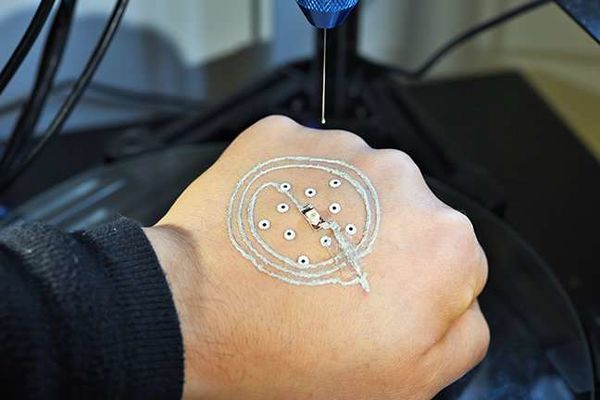
Researchers 3-D print electronics and cells directly on skin
"In a groundbreaking new study, researchers at the University of Minnesota used a customized, low-cost 3D printer to print electronics on a real hand for the first time. The technology could be used by soldiers on the battlefield to print temporary sensors on their bodies to detect chemical or biological agents or solar cells to charge essential electronics. Researchers also successfully printed biological cells on the skin wound of a mouse. The technique could lead to new medical treatments for wound healing and direct printing of grafts for skin disorders. The research study was published today on the inside back cover of the academic journal Advanced Materials. "We are excited about the potential of this new 3D-printing technology using a portable, lightweight printer costing less than $400," said Michael McAlpine, the study's lead author and the University of Minnesota Benjamin Mayhugh Associate Professor of Mechanical Engineering." [...]
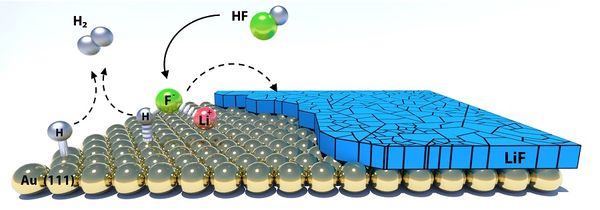
Battery's hidden layer revealed
"Commercially available since the 1970s, the lithium-ion battery is now the workhorse power source in many applications. It can be found in cell phones, laptops and electric vehicles. Yet, much about the basic science taking place at the atomic and molecular levels during charge and discharge remains a mystery. In a new study published in Nature Catalysis, a team at the U.S. Department of Energy’s (DOE) Argonne National Laboratory reports a breakthrough in understanding the chemistry of the microscopically thin layer that forms at the interface between the liquid electrolyte and solid electrode. Battery researchers commonly refer to this layer as the “solid-electrolyte interphase” or SEI. “More importantly, such understanding would significantly improve our predictive ability of battery lifetime, which is of extremely high value to an electric car manufacturer.” — Dusan Strmcnik, Argonne assistant chemical engineer." [...]
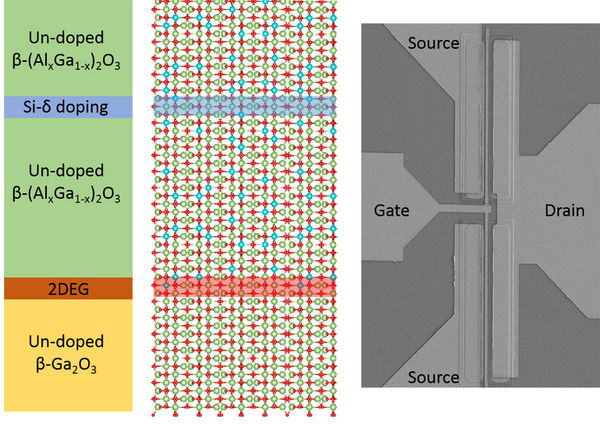
Getting Electrons to Move in a Semiconductor
"Gallium oxide shows high electron mobility, making it promising for better and cheaper devices. The next generation of energy-efficient power electronics, high-frequency communication systems, and solid-state lighting rely on materials known as wide bandgap semiconductors. Circuits based on these materials can operate at much higher power densities and with lower power losses than silicon-based circuits. These materials have enabled a revolution in LED lighting, which led to the 2014 Nobel Prize in physics. In new experiments reported in Applied Physics Letters, from AIP Publishing, researchers have shown that a wide-bandgap semiconductor called gallium oxide (Ga2O3) can be engineered into nanometer-scale structures that allow electrons to move much faster within the crystal structure. With electrons that move with such ease, Ga2O3 could be a promising material for applications such as high-frequency communication systems and energy-efficient power electronics." [...]
Documentação
A documentação é parte essencial do processo de aprendizagem e a Internet além de artigos interessantes de explorar também tem alguma documentação em formato PDF interessante de ler. Todos os links aqui apresentados são para conteúdo disponibilizado livremente pelo editor do livro.

HackSpace magazine #6
"We learn all about paper engineering and how to cut, fold and stick makes together with just a few sheets. To get you started, HackSpace mag issue 6 comes with a FREE paper automaton to cut-out and make (print edition only). Make your own gin Build a sumo-wrestling robot The Global Village Construction Set Glasses that read aloud" [...]

newelectronics 24 Abril 2018
"New Electronics is a fortnightly magazine focusing on technological innovation, news and the latest developments in the electronics sector. Downloadable as a digital page turner or pdf file, or offered as a hard copy, the New Electronics magazine is available in a format to suit you. " [...]
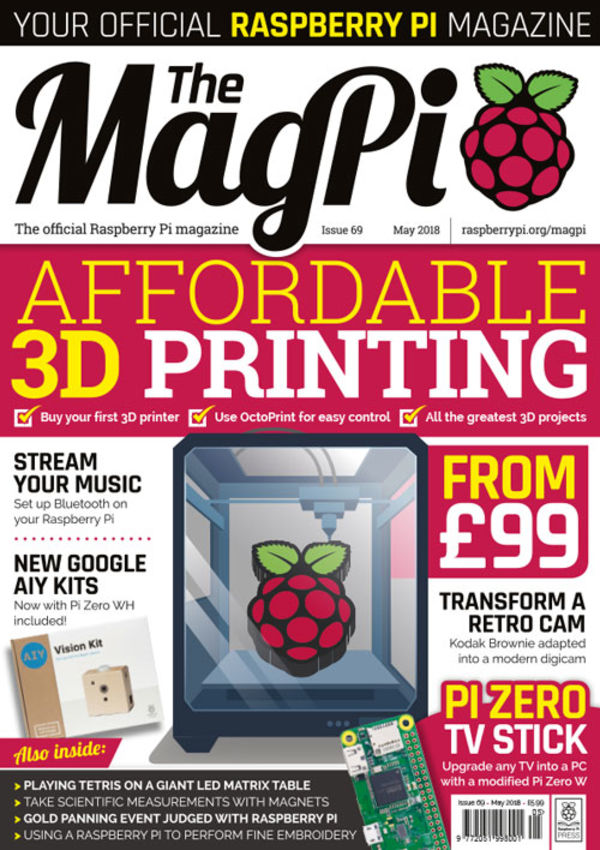
The MagPI 69
"All this inside The MagPi #69 Affordable 3D printing. Buy your first 3D printer and use a Raspberry Pi with OctoPrint to control it. Stream your music. Set up Bluetooth on a Raspberry Pi and use it to stream music to your speakers. New Google AIY kits. Discover the latest Voice and Vision kits." [...]
Projetos Maker
Diversos Projetos interessantes.
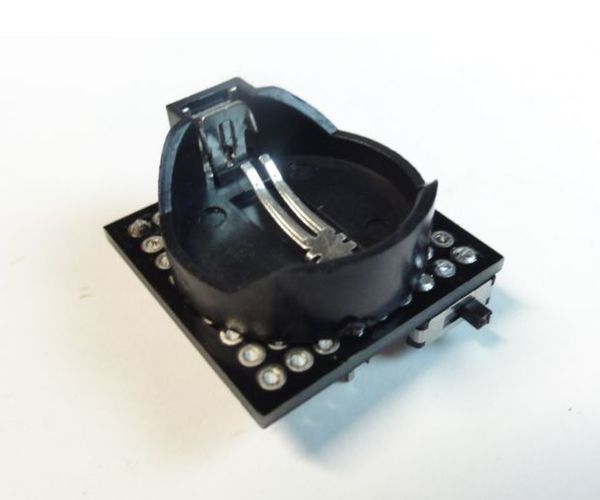
IOT123 - LIR2032 Battery Brick
"The IOT123 BRICKS are DIY modular units that can be mashed up with other IOT123 BRICKS, to add functionality to a node or wearable. They are based on the inch square, double-sided protoboards with interconnected through holes. Although the instructions relate to a semi-permanent bond between the BRICKS, the male pin joiner described here can be swapped for a pair (male on consumer/female on provider) of header pins for easy assembly. Also the pin contract (position and meaning of interconnecting pins) relates to the ATTINY85 NRF24L01 BRICKS, but can be modified to suit any other IOT123 BRICK contract. A switch is sandwiched between the 2 PCBs and the +ve/GND pin are exposed for consumption by other BRICKS. The battery holder is facing down (as it is the less frequented exposed surface) and has a pair of header feet for support/stability." [...]
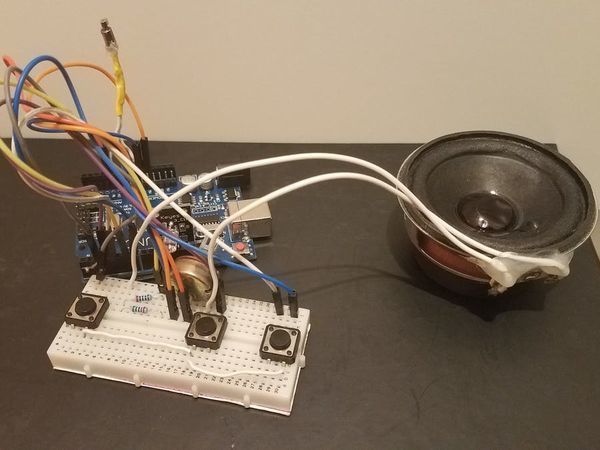
Play Polyphonic Tones!
"This project is using my MusicWithoutDelay library to play multiple sounds at the same time. " [...]

Kids MP3 Music Box
"When looking for some new DIY projects around arduino I found some nice ideas on RFID based MP3 players for Kids. And there is one great professional toy box on the market - these guys rule. They made a great business out of their smart idea. Check out - you'll find their page! As my two kids are getting into listening to audiobooks and music, more and more, and still are using good old compact discs with all the handling hassle, I decided to build such an MP3 player box with some nice features to make it a great individual toy for them. After I recently bought my first 3D printer this project seemed to be some good playground to also dive into 3D printing." [...]
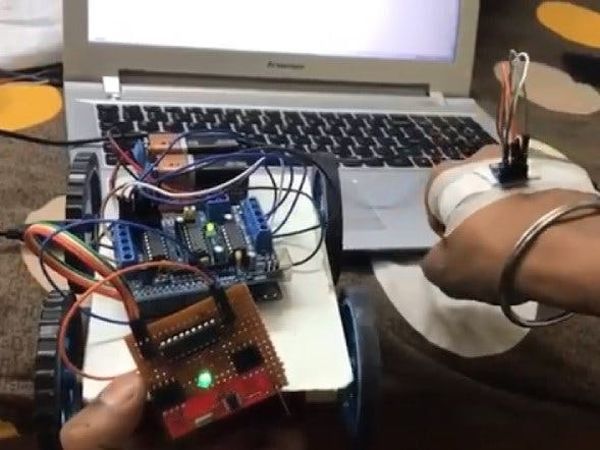
Gesture Control Robot
"This wirelessly controlled robot car uses gesture: tilt/orientation of hand to drive forward, backward, left or right. The gesture control robot is one of the most common type of projects made by hobbyists and students to understand and implement micro-controller knowledge in a physical and practical project. The concept behind it is simple: the orientation of the palm controls the motion of the robot car. How does it do that, you ask? Let's break it down. To get a good understanding, we'll move by understanding the role and function of each component and then combining them to achieve the desired performance." [...]
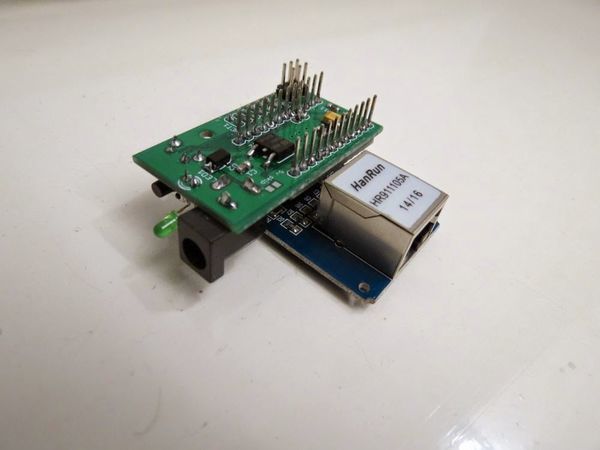
A web configurable Xively logger, build on AVR ATmega328
"Xively (formerly Cosm and before that Pachube) is a platform devoted to simplifying the interconnection of devices and data with applications on the Internet of Things. It is an on-line database service allowing developers to connect sensor-derived data (e.g. energy and environment data from objects, devices & buildings) to the Web and to build their own applications based on that data. This embedded platform is a modular and configurable Xively data logger, built on an ATmega328 micro, usefull to send datapoints to your xively feed. Every sensor module can add one or more configuration parameter, you can implement it in the configuration modules files. To make this platform easly expandable, the portion of code that gets data from sensor has been divided from the other code." [...]

The PNP Transistor: Characteristics and Applications
"This article helps you understand what PNP transistors are, how they’re used, and why they’re less common than NPN transistors. You are probably well aware that modern electrical engineering, and in fact the entire modern world, is inextricably linked to devices known as transistors. These components function as both on/off switches and as amplifiers. Though field-effect transistors currently dominate the electronics scene, the original transistor was a bipolar transistor, and this device was soon followed by the first bipolar junction transistor, or BJT. " [...]
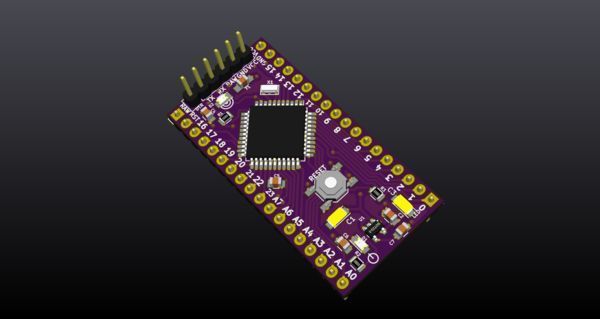
Mightyduino
"A DIY Arduino type hardware board based on ATmega644p Atmega1284p This project is free and based on @MCUDude's MightyCore which has awesome well designed kits for serious development with AVR's. Mightyduino is an Arduino with more memory than an Arduino Pro mini. It can use 644p (64k) or 1284p (128k) chips. Its voltage can be configured by U1 and the frequecy can be configured by the Murata's ressonator (crystal). It has a power led and another one connected to pin D0. The push button performs reset." [...]

PC Controlled Robotic Arm
"I have always admired the modern manufacturing technologies and the important role played by these machines in different areas of manufacturing such as: lifting materials, installing and collecting parts, welding and cutting and last but not least its usability in warehouses ... My experience in building this robot arm was a challenge. So as a start I choose a simple robotic arm designed by fortzeroas in 2016, then I decided not to control it by hand as usual, So I created an Automation App by "C# Windows Application" and I made it looks like manufacturing automation Apps. So as per my programming skills experience, I created this Automation Application to fully control the robotic arm, monitoring its movement, give it different tasks to do. " [...]
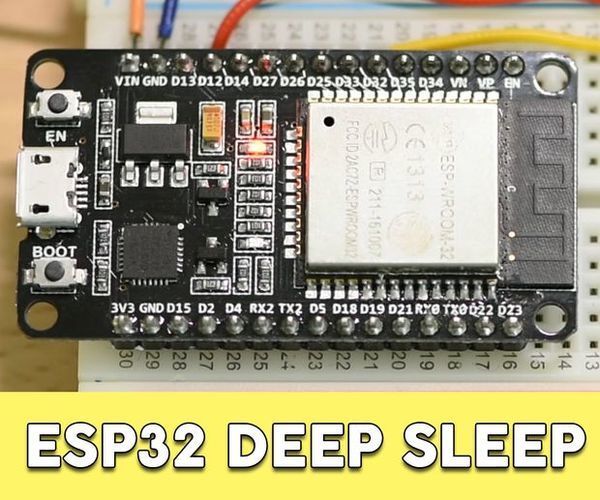
ESP32 Deep Sleep Tutorial
"Dear friends welcome to another Instructable! Today we are going to learn how to put the ESP32 chip into the Deep Sleep mode in order to conserve power and make our projects battery friendly. Have you imagined you project to last on regular AA batteries for almost 5 years? This is possible with the ESP32 chip. The ESP32 chip is a fantastic new chip with great features. It offers a lot of processing power, two 32 bit cores, a lot of memory, Bluetooth and WiFi in a small and easy to use chip." [...]

Telegram Bot Esp8266-001(Arduino UNO or NodeMCU)
"Hello! In this tutorial i will show you how to control arduino with esp8266-001 and telegram. It opens great opportunities for Internet of Things (IoT). " [...]

Simple ultrasonic levitation apparatus
"If you want to experiment with ultrasonic levitation and let objects float through the energy of sound waves, you do not need any scientific equipment, complicated controls or expensive kits. An Arduino, a stepper motor driver and a rebuilt distance sensor are sufficient. Granted, our Mini Ultrasonic Levitation Device can not hold heavy objects in the air. But even small polystyrene beads are fascinating when they float as if by magic. Unlike magnetic levitation , the ultrasound version requires no control that monitors the suspended object. In acoustic levitation, an object "nests" in a node of a standing acoustic wave." [...]
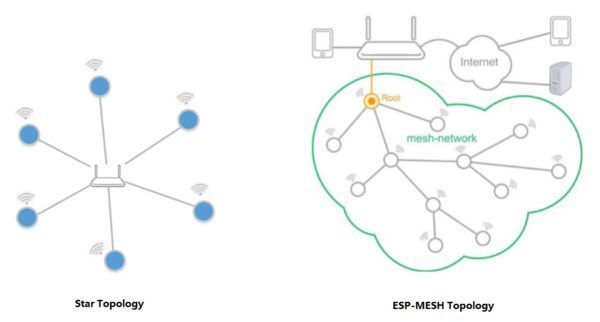
Espressif Mesh Development Framework
"Espressif Systems Mesh Development Framework (ESP-MDF) is the official mesh development framework for the ESP32 chip. ESP-MESH Overview With the development of the Internet of Things, the scale of networked devices is rapidly expanding. However, the traditional senario of wireless networking implements a point-to-point or point-to-multipoint star topology. All terminal nodes must be connected to the hub (router). This will lead to the following two issues: Limited network capacity: the hub (router) can be directly connected to 10 devices at most. Limited network coverage: all terminal nodes must be located within the Wi-Fi coverage of the central node, making the networking senario inappropriate for large venues or places with multiple layers." [...]

DIY Arduino Wordclock
"My version of a word clock will not feature a 1212 LED-Matrix display. Instead its made with LED strips and only the significant words on the clock can light up. With this method you cant display custom messages, but the whole build wont cost you as much either. This instructable is an almost exact copy of my article, which is published here. " [...]

Versatile Volt, Ampere, and Power Meter
"Multimeters are suitable for many purposes. But usually, they only measure one value at a time. If we deal with power measurements, we need two multimeters, one for voltage and the second for Ampere. And if we want to measure efficiency, we need four multimeters. Here we will build small and inexpensive meters to do these measurements. " [...]
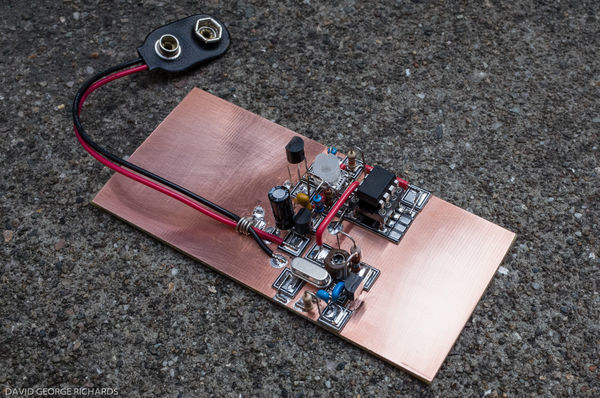
The K7TMG HF morse code temperature beacon
"This was a fun little project – and it gave me an idea for a future one. Sometimes, I find that the more complex undertakings, which require more planning, can get to the point that they “take me over” somewhat. At that point, for me, some of the fun starts getting squeezed out and that, of course, absolutely cannot be allowed to happen. This is the time when simple and fun projects save the day. QRPp beacons have been a “thing” of mine for a while now, ever since I put the Sproutie SPT HiFER Beacon on the air, sending it’s 12 wpm SPT ID out continuously on 13558KHz, with a mighty 4.6mW to a much shortened loaded dipole. That signal was spotted by a few people, including one spot 900 miles away." [...]

A Simple Pressure Measurement Device for Educational Purposes
"Below you find a very simple and easy to build device to demonstrate pressure measurements. It might be usable for schools or other STEM related projects, but may also be adapted to be integrated into other devices. While there are several sensor breakouts for pressure measurements available today, I was missing a simple and cheap device to play with these and use them for educational purposes.My construct basically consists of a large syringe and a sensor breakout placed inside of the syringe. The breakout is connected to a microcontroller with a set of cables going through the outlet of the syringe. The outlet of the syringe is sealed airtight using hot glue or some other method, resulting in a defined volume of air trapped inside the syringe.The sensor is then connected to an Arduino or another microcontroller. By movement of the plunger of the syringe, the pressure inside will be changed." [...]
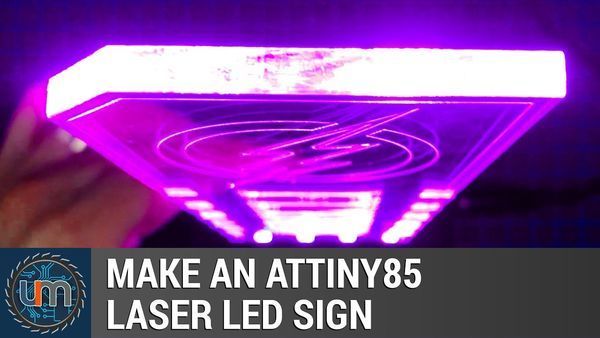
ATtiny85 LED Laser Light
"Create a tiny ATtiny85 controller board that drives some NeoPixels and turn it into laser LED light display. Introduction I had a bunch of ATtiny85 chips laying around and reels of NeoPixel strips, so I decided I wanted to make something bright and colourful for my kids.... The full build process is in the video but I have included some additional diagrams below to help with the component placement and using the ATtiny85 in the Arduino IDE. " [...]

Paper As a Substrate for Circuits
"I’ve spent a considerable portion of my time in the past couple of years helping to develop products for Chibitronics, a startup that blends two unlikely bedfellows together, papercraft and electronics, to create paper circuits. The primary emphasis of Chibitronics is creating a more friendly way to learn, design and create electronics. Because of this, much of the material relating to paper circuitry on the Internet looks more like art than electronics. This belies the capabilities of paper as an engineering material. Google’s Cardboard and Nintendo’s Labo are mainstream examples of paper’s extraordinary capability as an engineering material. Prof. Nadya Peek at the University of Washington has written several academic papers on building multi-axis CNC machines using paper products." [...]
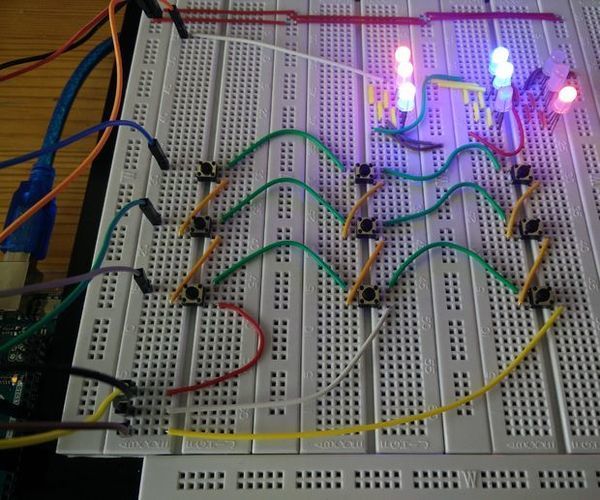
Tic Tac Toe on Arduino With AI (Minimax Algorithm)
"In this Instructable I am going to show you how to build a Tic Tac Toe game with an AI using an Arduino. You can either play against the Arduino or watch the Arduino play against itself. I am using an algorithm called "minimax algorithm", which can be used not only to build an AI for Tic Tac Toe, but also for a variety of other games like Four in a Row, checkers or even chess. Games like chess are very complex and require much more refined versions of the algorithm. For our Tic Tac Toe game, we can use the simplest version of the algorithm, which is nonetheless pretty impressive. In fact, the AI is so good that it is impossible to beat the Arduino!" [...]

The 'Sup - a Mouse for Quadriplegics - Low Cost and Open Source
"A friend and I recently worked on creating a device for a Quadriplegic they know to allow him to use his computer. After some research, we decided on a "Sip-n-puff" combined with a joystick to give Allen the ability to move the cursor around the screen a click things. A Sip-n-puff is an input device that takes user input in the form of a "Sip" or a "Puff" (Imagine sipping through a straw, or blowing bubbles in your drink). Here, we combine it with a joystick to enable the user to move the cursor on-screen, and the Sip-n-puff is used for functions such as clicking and scrolling. Sip-n-puff devices are nothing new, and joystick/sip-n-puff combos aren't too uncommon either- But to buy such a device will cost you around $500 to $1500! For Allen, who has no source of income, that's an impossible price." [...]
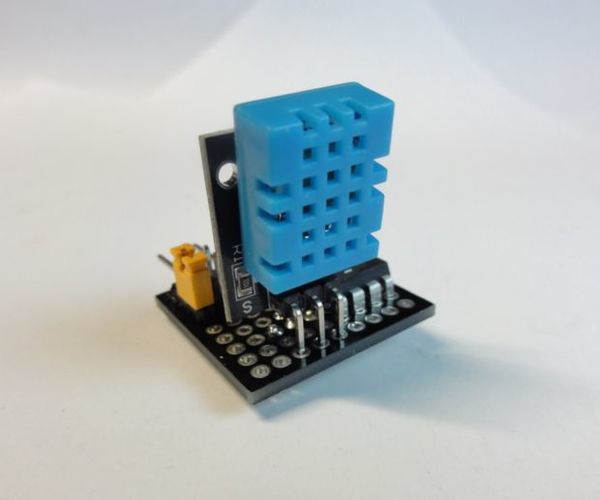
IOT123 - I2C DHT11 Brick
"The IOT123 BRICKS are DIY modular units that can be mashed up with other IOT123 BRICKS, to add functionality to a node or wearable. They are based on the inch square, double-sided protoboards with interconnected through holes. A number of these BRICKS are expected to be on multiple nodes (Master MCUs - ESP8266 or ATTINY84) on a site. The MCU needs no prior knowledge of the sensors purpose or software needs. It scans for I2C nodes then requests a property dump (sensor data) from each slave. These BRICKs supply 5.0V, 3.3V and another line for an upcoming sensor voltage standard (1.2V/1.5V/1.8V/2.5V)." [...]
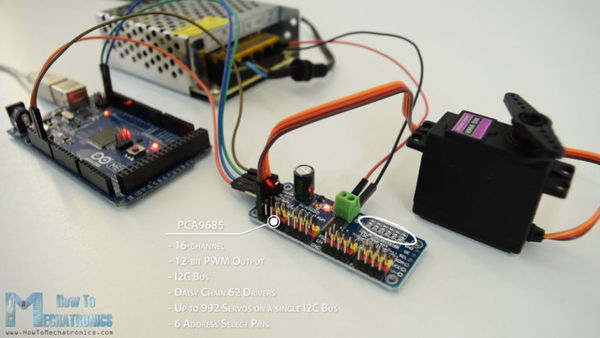
How Servo Motors Work & How To Control Servos using Arduino
"In this tutorial we will learn how servo motors work and how to control servos using Arduino and PCA9685 PWM driver. You can watch the following video or read the written tutorial below. Overview There are many types of servo motors and their main feature is the ability to precisely control the position of their shaft. A servo motor is a closed-loop system that uses position feedback to control its motion and final position. In industrial type servo motors the position feedback sensor is usually a high precision encoder, while in the smaller RC or hobby servos the position sensor is usually a simple potentiometer. The actual position captured by these devices is fed back to the error detector where it is compared to the target position." [...]
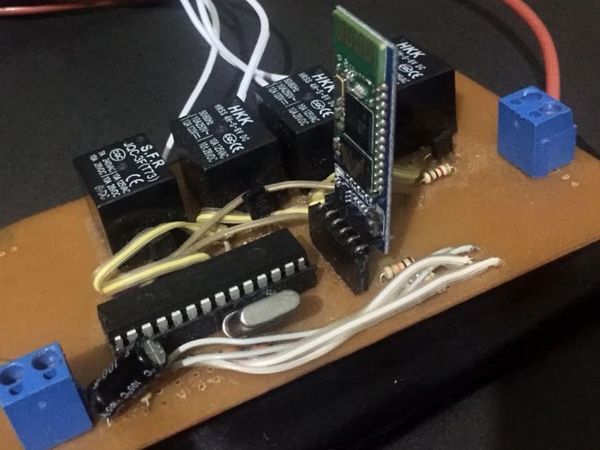
Bluetooth Controlled Relays
"Remote controlled relays using Bluetooth HC-05, PIC microcontoller and LabVIEW. This project is done on a company requirement which want to change the legacy Switch Control Board to Wireless Controlled Board. As per requirements, Bluetooth module is used which use UART communication. GUI of the Project is developed in LabVIEW in which working is a fun. LabVIEW send the commands via Bluetooth of Laptop to Micro-controller" [...]
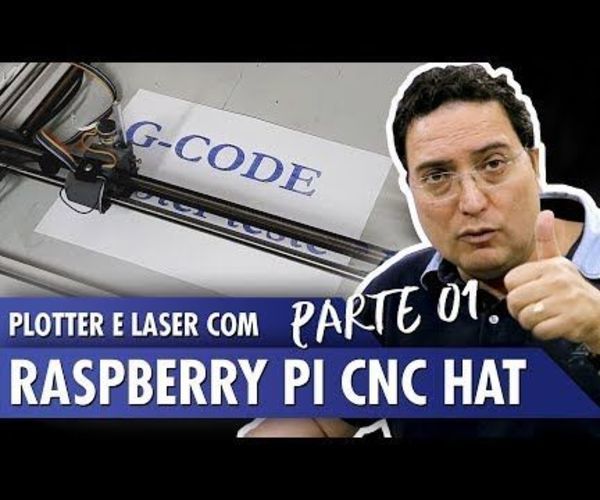
Plotter and Laser With Raspberry Pi CNC Hat
"Have you ever thought of putting together a laser plotter using a Raspberry Pi CNC Hat? We do precisely this in our project today. Ill introduce you to an XY table, which is the basis of this "printer, which serves both to record and cut certain materials, and involves the whole assembly process in the mechanical part. For our project, we use a 15-watt laser. Also, well use the GRBL, but in a different way, as itll be with the Raspberry Pi 3. And instead of using an Arduino Uno, as is usually the case, well use a Hat from Protoneer (Electronic Prototyping Specialists), which is like a Shield for the Raspberry." [...]

Arduino MIDI Stepper Synth
"Turn MIDI data into stepper motor music! I was doing my usual, browsing YouTube when I saw some floppy drive music. Having known that floppy drives are controlled by stepper motors, I decided to make my own stepper motor sound generator. I had seen that people had done this before, but every instance had either not shared the code or their code was highly flawed and/or limited. Having been learning C++ in school, I decided to put my skills to use. What I wanted really to do was make a code that was simple and easy to use and modify." [...]
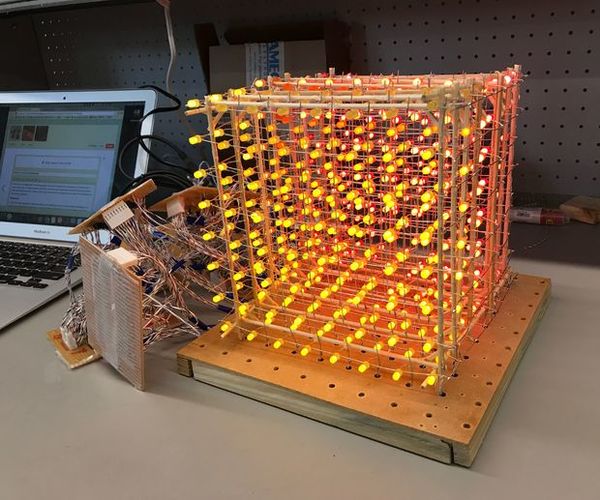
LED Cube Display
"In this project, you will build an 8x8x8 LED cube as a display. After building the cube and learning the code basics, you will be able to write your own display animations. It is a great visual for scientific purposes and it will be a nice decorative addition to your room! During the process of the cube-building, you will acquire a whole slew of basic electronics skills, which paves the way for more complex projects in the future. This is my individual project for the Electronics course, and it took about five weeks. I spent 12 hours on this project per week, and I had access to the parts and tools typically found in a college electronics lab." [...]
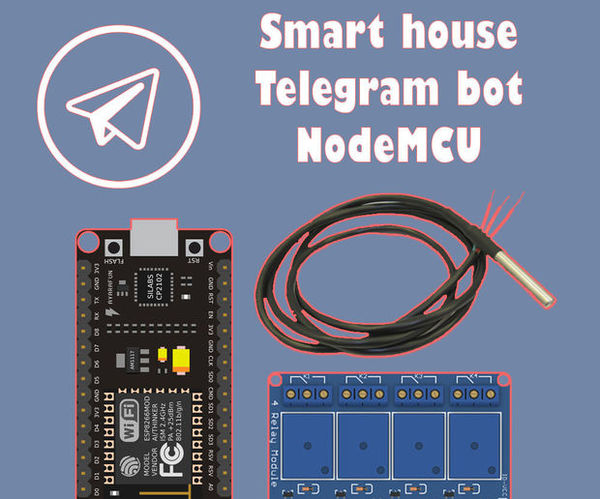
Smart House Telegram Bot With Nodemcu (esp8266, Relay, DS18B20)
"In this tutorial i will show you how to create telegram bot and control house using it. But firstly, subscribe my Telegram channel, and discover new projects faster then others. It's motivation for me. Let's go! " [...]
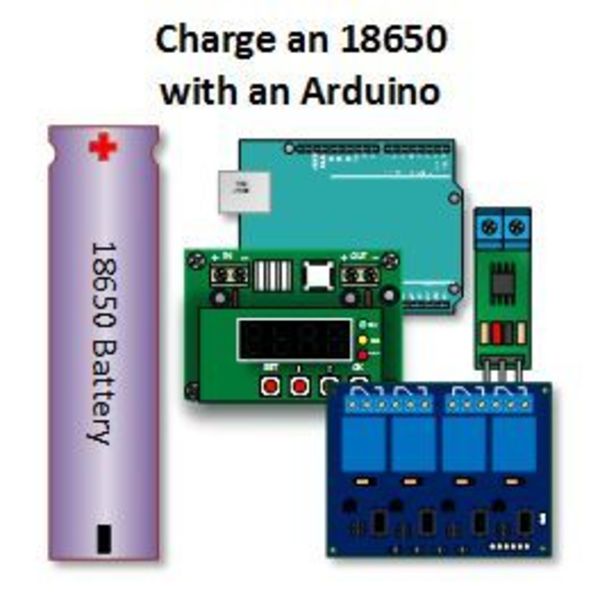
Arduino 18650 Battery Charger: Project 1
"This lithium battery is perhaps one of the most commonly used batteries today. It can be found in laptop computers, hand tools, electric cigarette’s and even electric vehicles. My personal experience has to do with being an engineer that designs the latter. In this article, you will be introduced to some battery charging basics and you will be shown how to build a charger using an Arduino and some readily available parts. More, an experienced user should be able to substitute their own parts to accomplish the same thing. " [...]
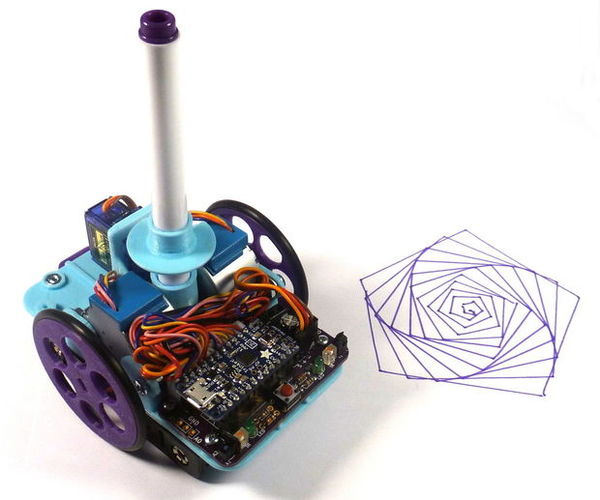
Open Source Turtle Robot (OSTR)
" Robotics is the exciting intersection of a number of engineering fields including mechanical engineering, electrical engineering, and computer science. This project was designed as the basis for a two-day workshop for high school age students to introduce them to engineering principles and giving them a jumping off point for exploring their interests further. There is something for everyone here, even if it is just for the art it creates. What is Turtle Robot? The concept can be traced back to William Walters robotics work in the 1940s which investigated complex behaviors in simple systems. Turtle robots are generally slow moving with tight turning radiuses and can trace a design that shows their behavior over time." [...]
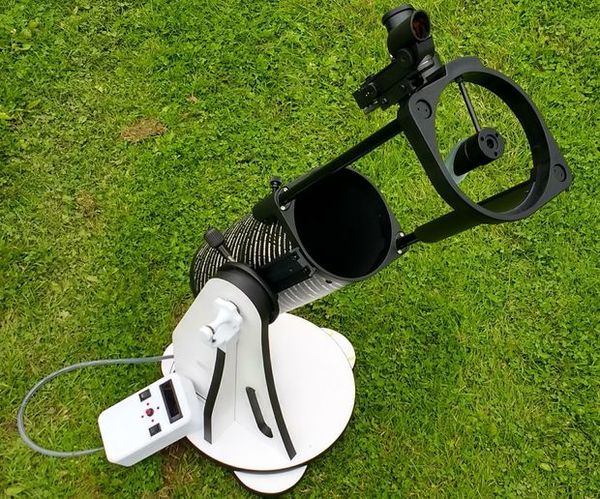
Arduino Star-Finder for Telescopes
"Space is big. Really big. Owning a small telescope can give a lot of pleasure, but it's often a struggle trying to locate specific objects in the night sky. In this project I made and integrated an Arduino-powered star-finder with a small reflecting telescope, to allow me to easily find the galaxies, nebulae and clusters that I wanted to observe. What: This device calculates the current position in the night sky of a list of galaxies, nebulae and star clusters. It then measures the current heading and elevation of the telescope, and displays to the user how to orientate their telescope so that the chosen target object will be visible." [...]
That's all Folks!


